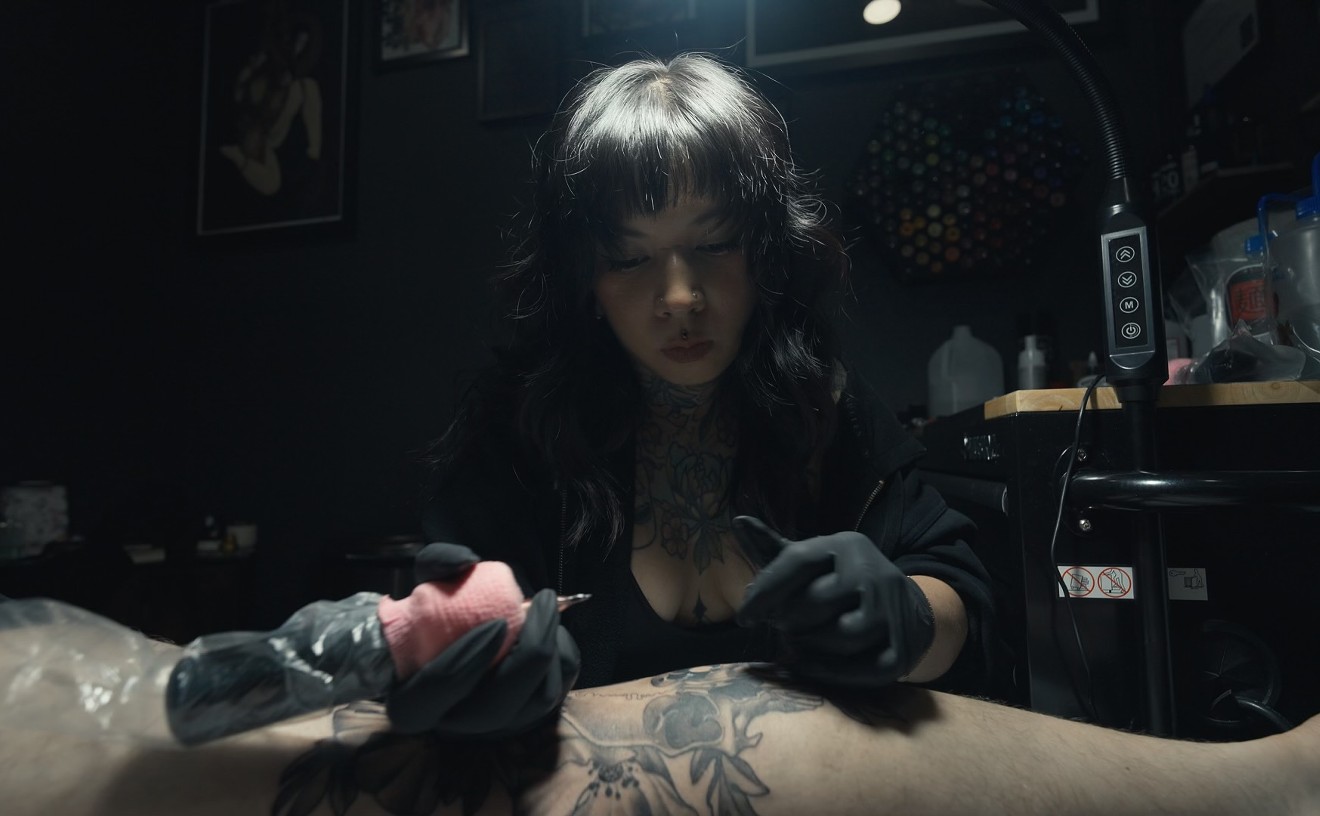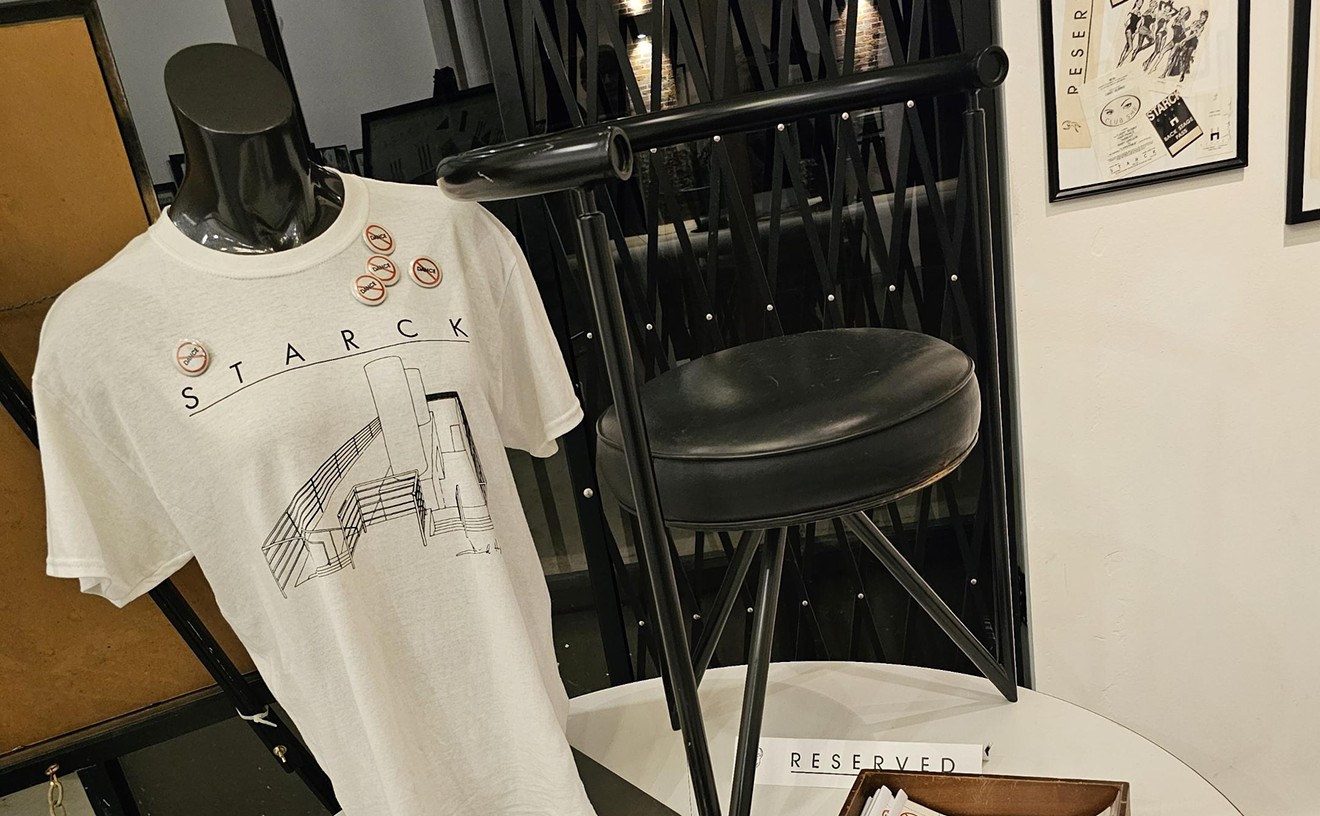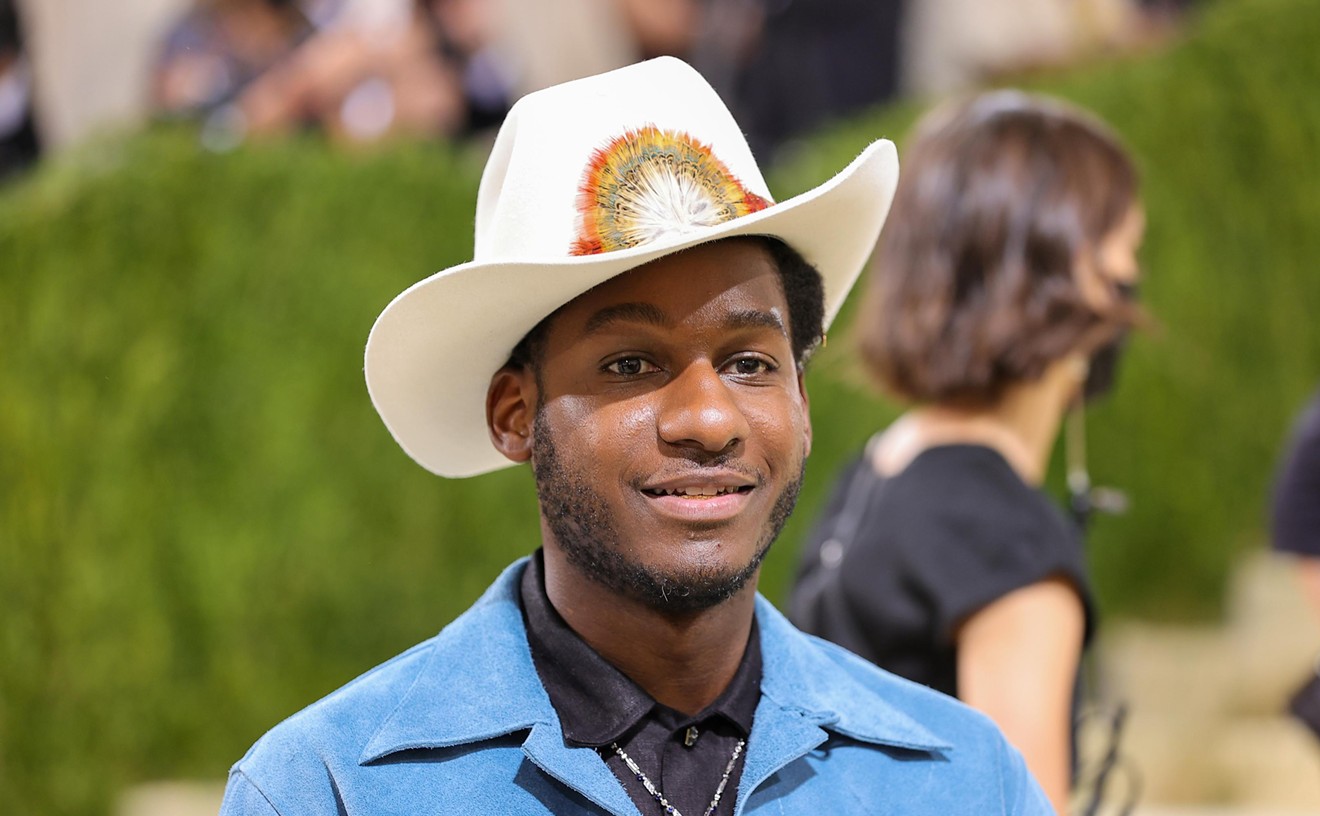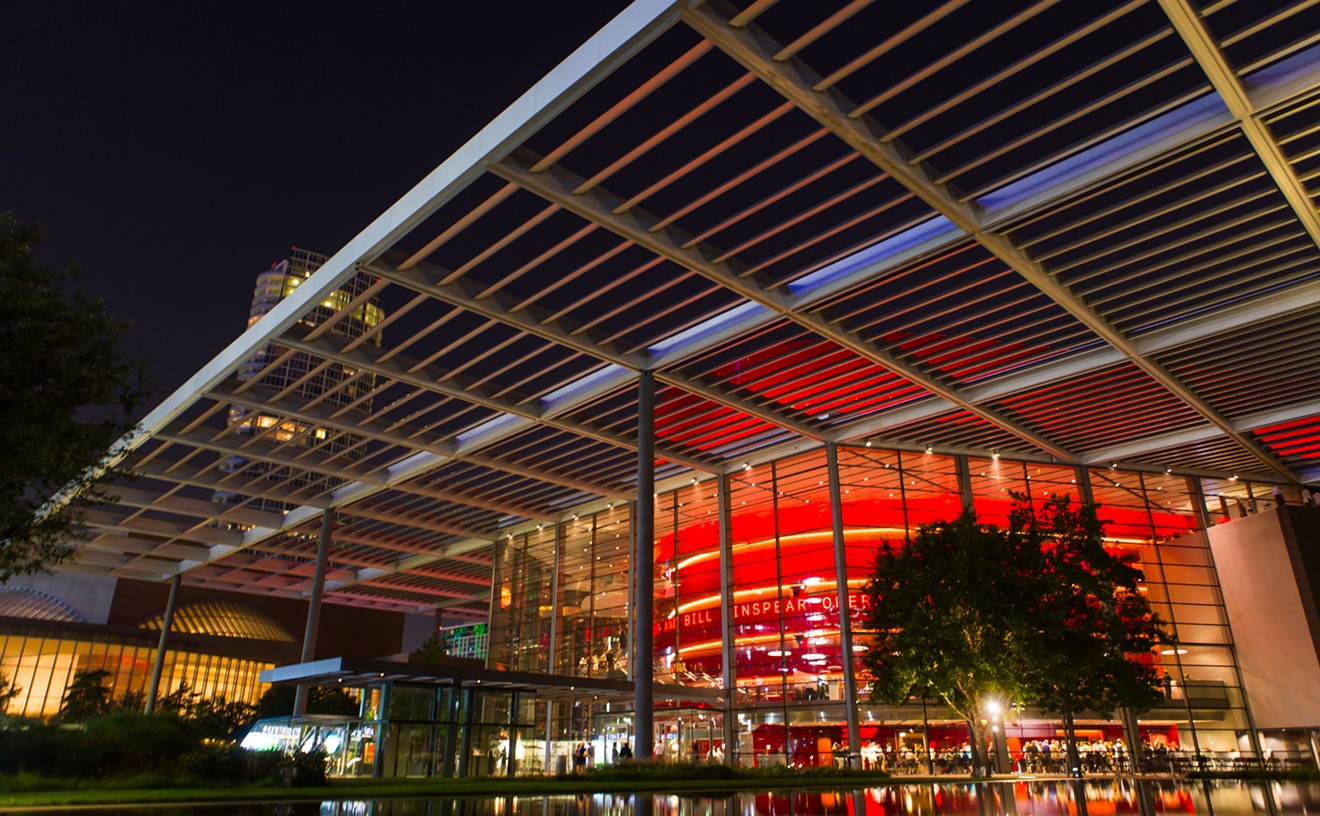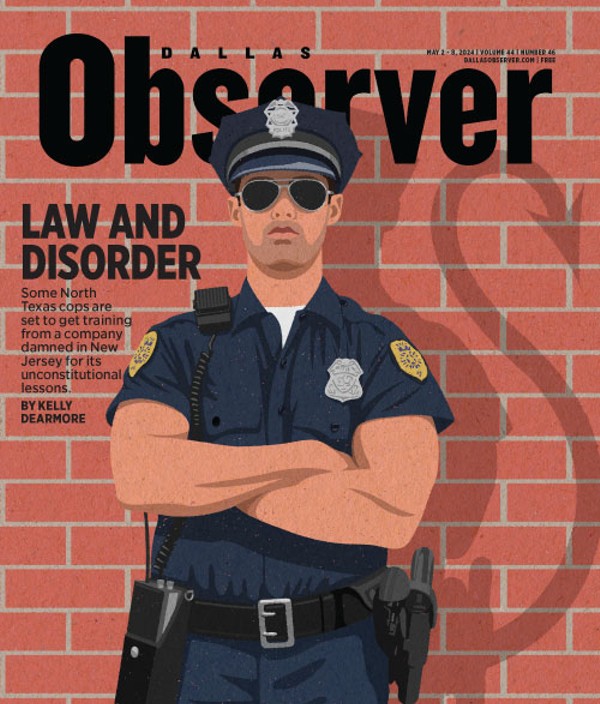So instead of trespassing on Appalachia's breathtakingly lush landscape and meeting its unusual people, we vacation elsewhere (that's how we know, contrary to other movie myths, that Chicago isn't populated solely by mafiosi and Scotland by junkies). Lucky for us, Shelby Lee Adams does hang out in Appalachian hollers, and more importantly, with the people there, and he graciously documents his yearly pilgrimages with heart-stopping photographs of it all.
Part black-and-white documentation, part haunting artistic vision, Adams' photos go beyond the call of duty on either end; his deep-focus environments, unflinching portraits, dream-like lighting, and ongoing images of families and individuals act as a combination punch: National Geographic meets Diane Arbus, On the Road with David Lynch instead of Charles Kuralt.
This Friday, 30 of these images go on display at Photographs Do Not Bend Gallery in Dallas, though most viewers will likely forget they're even looking at stunningly composed photographs. They're too busy marveling at what they reveal: a legacy of rural tradition anchored in welfare, alcohol, coal mining, religion, and questionably extended families. What happens to a house when it becomes as much a storage room-barn-shrine as it does a home. The hardened souls behind the eyes of those who've lived "up against it," as Adams writes in his stunning book, Appalachian Legacy, referring to uninterrupted generations of poverty, low expectations, and a dismissive attitude from the outside--the kind of forces that create communal ties that not only bind people, but are crucial to their very survival. We are outside looking in, and though we try, we can't quite grasp what separates these people from the rest of us. We can't fathom that it's because we own computers and fast cars and work in office buildings, and they handle snakes in church and slaughter hogs and use outhouses. Sure, theirs is an evaporating culture in a fast-homogenizing world, but you can see in those eyes, those knowing, challenging gazes, that their mixed fate is rooted far deeper than the material, far past their lack of college education and paltry paychecks. That Adams' photos can hint at the complexity of this buried mountain culture without exploiting its people is the second part of his art. Because what his photos don't reveal is shame, and in preserving his subjects' pride, Adams makes us guess about what drives them, which in turn makes us think.
Hard-edged prejudice--something Appalachian mountain people have lived with for at least half this century, since the coal mines were shut down, welfare kicked in, and their more restless inhabitants moved into the cities--is a difficult force for a lone art photographer to debunk. That Adams, armed with his double masters' degree in fine art, snaps these people in their actual environment, wearing their own clothes, expressions, and body language, has some critics cautioning that Adams is merely cashing in on the stereotype. Why would Adams photograph a dough-faced man possessively grasping his skinny, slouchy teenage bride, flanked by two sadly disfigured tiny relatives, all lighted garishly on a dilapidated porch, if he wants to capture the natural nobility and grace of these people? To dispel popular myth? Regardless of the honesty of the photo, it makes most viewers shudder a bit while conjuring its inherent implications (spousal abuse? has she even hit puberty yet? are those deformed ones related in some not quite legal way?). But look closer. There's no disrespect in the camera's approach, no judgment coming from Adams himself. Our knee-jerk response is to misunderstand, to criticize. Yet there they are, unapologetic and steady. Again, their eyes tell the half-story: "We do exist. Get used to it."
Indeed, they have names (the man described above is Roy Childers) and stories, and Adams can tell them all. In his book, he explains the context of the photos with clear, graceful language, letting readers in on the backgrounds of his subjects and his own growing attachment to them. Of the Napier family, one of his longtime subjects, he writes, "Most of the deceased children had died violently; one son was shot and killed by his father, a daughter was poisoned by relatives, and other sons died from shootings, including one killed by his brother." Still, his time with them has sparked some mutual affection: "James Napier and I have become particularly close. He loves being photographed, has no inhibitions about it, presenting himself to the camera with daring honesty...He is by nature quite harmless, and when not drinking is a gentle soul."
Adams photographs the Napiers with straightforward aplomb: the adult boys take off their shirts to show their pigeon chests and scars, the grizzled old parents stand in rapt attention. The Hog Killing, perhaps the most famous of Adams' photos, shows the Napier family just after a slaughter; the six of them proudly pose around the wooden frame of a giant crucified pig, its bleeding, foaming head in a tub. They're all smiling broadly, the Napier patriarch gripping a long-handled ax. All in a day's work for them, a new American Gothic. To many of us, a macabre scenario into which we'd hate to stumble.
Adams might admit that the work is precarious for the uninitiated; he himself has been threatened by mountain people upon his approach with a camera in hand. But once he explains his own roots in the region--he was born in Hazard, Kentucky, and spent much of his childhood living with his farming grandparents outside Whitesburg--they accept his cause, and eventually embrace him, some to the point of treating him like an adopted family member. His connection to them doesn't stop with the photos; he dines with the spinstered Joseph sisters, drives Brice Caudill on errands, enjoys long chats with Hort Collins ("one of my closest friends," he writes). He returns from his home in Massachusetts, summer after summer, his relationships with his friends in six eastern Kentucky counties strengthening all the time. (The mountain people often scare outsiders and media folks with the tale of Hobart Ison, a mountain man who shot and killed a photographer for trespassing back in 1967, when Adams was a senior in high school. Some tried that tactic out on Adams, but the unswayed photographer had one hell of a truthful comeback: "Saying that I was Hobart Ison's cousin...would put people at ease almost immediately.")
He's been making these trips for 25 years. His photos of some of his subjects date back to 1973; to watch a girl like Tammy grow up is a mesmerizing, unsettling dip into Adams' oeuvre, a 28 Up for the cultural anthropology crowd. Here she is in 1977, age eight, frail and blonde, with such a defensive, dark gleam in her gaze that it caused one psychologist, while looking at the photograph, to say: "Look into her eyes. She knows so much more than she's supposed to at that age,"--the therapist was referring to the likely possibility of neglect and molestation. Then Tammy in 1987, tall and bony, the short sleeves of her dingy shirt revealing a homemade tattoo of a cruciform on her forearm. Her stance is confrontational, her eyes still accusing, only now underscored by deep, dark circles of exhaustion. Next frame: Tammy nine years later, perched like an emaciated bird on a couch, cheekbones threatening to break the skin of her face, her eyes no longer defiant, but totally numb. A rebel flag hangs in the window. In her life, she'd seen her father abuse and shoot her mother, then turn the gun on himself; Tammy herself had been married at 15, abused by her husband, divorced--the mother of seven children by five different men. She supports them all with welfare provisions.
It's difficult to neatly package an emotional response to this work. The sensationalist in us wants to know all the dirt, to find affirmation in our suspicion of the subjects' depravity. The humanitarian in us wants to suspend judgment and study the photos as art and fact. Devil on the left shoulder, angel on the right. In the end, our projected criticism may say more about us than about them--Adams' endangered holler dwellers. And we can only hope that if someone photographed us in our natural environment, our eyes could meet the camera with the same soulful honesty, the same beautiful truth.
Shelby Lee Adams: Appalachian Legacy is at Photographs Do Not Bend Gallery December 4 through January 16. 3115 Routh, (214) 9969-1852. Adams lectures on his work at The Dallas Museum of Art on Thursday, December 3, at 7 p.m. in the Horchow Auditorium.





